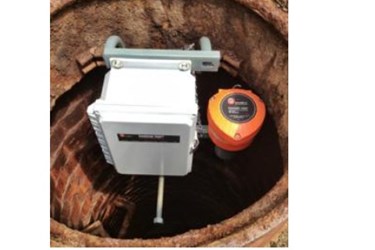FLO-CORP's Guardian 2000™ Wireless Monitoring System Brings Advanced M2M Functionality To Process Monitoring

Wireless monitoring provides significant process control features to businesses and municipalities at a fraction of traditional cost.
Wadsworth, OH (PRWEB) - FLO-CORP announces the release of the Guardian 2000™, a wireless monitor that transmits data using cell towers and/or satellites, along with pinpoint location of the device through a Global Positioning System (GPS) satellite chip. Cell phones, satellite phones, and GPS navigation systems are excellent examples of the technologies in use. FLO-CORP has packaged the benefits of these wireless communications with a web interface that makes process conditions readily available from any computer, tablet, or smartphone. This machine to machine (M2M) functionality is changing industries for the better by offering superior features at a lower cost.
Traditional remote process monitoring relies on wired infrastructure or radio. In some cases, tapping into an existing network or programmable logic controller (PLC) is quite simple. When tanks, open channels, pipelines, or other monitoring applications are located at the same physical location as the company or municipality, the cost of wiring is typically low. The Guardian 2000 is aimed at a different target, addressing monitoring applications that are situated away from existing infrastructure. This segment, typically dominated by radio transmitters, can be covered much more economically and reliably with new wireless monitoring technology.
In a typical remote monitoring setup, the Guardian 2000 monitors by waking up at set intervals, powering up the connected measurement device if applicable (a flow meter, level transmitter, etc), and checking the process condition. If no trigger point is met, the Guardian 2000 powers down the connected device and then powers down itself. The Guardian 2000 wakes up to transmit data to the Monitor My Guardian™ online interface as programmed, once a day for example. If while making a routine check the Guardian finds a process condition change, it can either wake itself more frequently to make additional checks or if an alarm point is met, it will send text and e-mail alerts and report the findings on monitormyguardian.com.
Wastewater is an excellent example of an industry that benefits from wireless monitoring. The Environmental Protection Agency (EPA) requires the monitoring and reporting of overflow events. An overflow event occurs when more wastewater is produced than the pipeline and/or wastewater treatment plant (WWTP) has capacity to handle. In this situation, wastewater flows into a combined sewer overflow (CSO) and is dumped into a body of water to prevent the pipeline from backing up. Since these locations are dictated by the pipeline and its proximity to a body of water, a couple of options exist. One option is to run wire to the site, which in many cases is very expense. Another option is to log data locally and retrieve it manually. A traditionally popular option for CSO monitoring is the use of radio to transmit data, but the lack of reliability and the cost makes it prohibitive. The most convenient and cost effective option is the use of cellular and satellite technology. The Guardian 2000 provides constant access to data while only requiring a visit to the site once a year or less for battery replacement.
The City of Cuyahoga Falls, Ohio chose the Guardian 2000™ to report overflow events measured by the Ranger 1000™ Ultrasonic Level Transmitter. The city’s pipeline runs through the Gorge Metro Park so accessing the CSO involves hiking a couple of miles. Previously FLO-CORP would take that hike several times a year to retrieve the data log of overflow events for the city. With the new system in place under the manhole at the CSO, the city’s workers do not have to wait months to know what happened. At any time they can log onto monitormyguardian.com and retrieve their information. The GPS location of the Guardian 2000 gives a clear confirmation of which CSO data is being reviewed and far less man hours go into retrieving data.
The tank truck industry is also benefiting from wireless monitoring. In addition to remotely reporting data, the Guardian 2000 benefits this industry by reporting the exact location of the tank truck. The information collected varies by application and can include monitoring flow into the tank truck during pickups, flow out of the truck during deliveries, tank level, product temperature, etc. The device can be wired to the truck for power to eliminate the need for battery replacement. The Guardian 2000 grants business owners and inventory managers faster access to accurate process information. This information enables them to make better business decisions in everything from theft prevention to route optimization and more.
Recently the satellite version of our wireless monitoring system was installed alongside a Ranger 1000 Level Transmitter to offer overflow protection at a hydraulic fracturing site. Frac fluid, which consists mostly of water, is used in the process of horizontal drilling for trapped shale gas. After use, this fluid must be stored onsite until reused in the fracking process or shipped offsite for processing. To accommodate this task, tanks are setup to temporarily store the fluid at the drilling site. Through the remote monitoring process described above, periodic checks are made and reported to ensure an overflow event does not occur.
Process monitoring helps save money and time while aiding in protecting the environment. FLO-CORP’s Guardian 2000 Wireless Monitoring System has improved process monitoring by bringing technological advancements in cellular, satellite, and GPS communications to the M2M process instruments market. http://www.flo-corp.com
Source: PRWeb
View original release here: http://www.prweb.com/releases/2013/5/prweb10733513.htm
